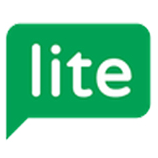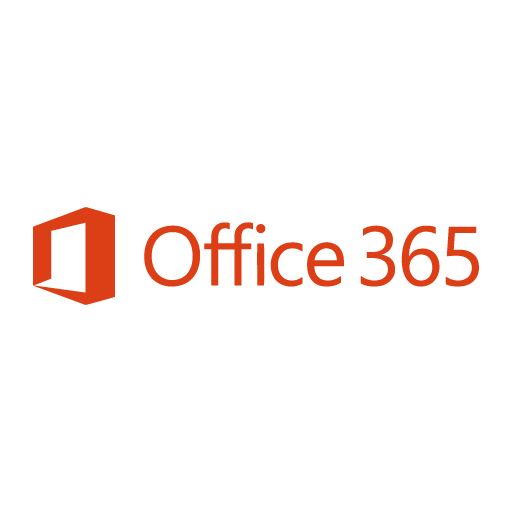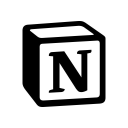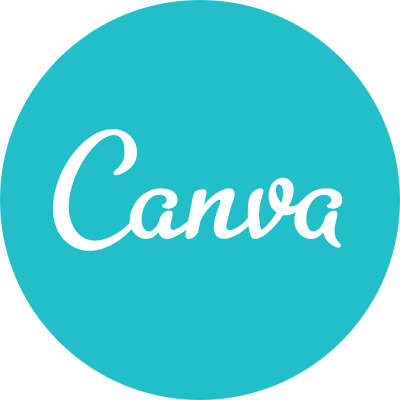How A Doctorate In Physics Built An AI Video Generation Tool [$17K MRR]
Hello! Who are you and what business did you start?🔗
Hi, I’m Nicolai Klemke, from Germany, and 34 years old. I was a physicist in my previous life and fell in love with programming and AI. My startup “neural frames” is primarily an AI music video generation tool that helps musicians generate audio-reactive visuals for their songs. AI artists love it too because it provides a lot of utilities to explore the depths of text-to-video generation with a user-friendly interface.
I built the app based on Stable Diffusion by myself and launched the first version in January, and the second version in April. Since April it has received 130k visitors and is currently at an MRR of $17k (End of October 2023).

What's your backstory and how did you come up with the idea?🔗
While studying physics, I made a lot of music as a rapper and producer. I was always frustrated that, whenever I finished a song, I needed visual content for posting the song on social media. It also needs to be videos because images with music don’t work on Instagram, TikTok, and YouTube. At the same time, getting these videos is super time-consuming or expensive.
A femtosecond laser I was working with:

My music career never really took off, so I pursued a PhD in physics instead. This was at DESY in Hamburg (Germany), where I studied the interaction of powerful laser pulses with thin crystals. I mainly worked in the lab and did some experiments in which I kept measuring something strange & interesting.
To understand the phenomenon better, I set out to simulate it, and, indeed, I could explain my measurements quite well with those simulations. Apart from that scientific accomplishment, performing these simulations turned an even more critical switch in me: I’ve been searching for something that fulfilled me deeply, and I always knew that Physics wasn’t exactly it.
When writing the code of these simulations, I realized that I never wanted to stop programming again. This was around 2019, and there were already quite impressive things happening in AI (although nobody called it AI then). And I went down the AI rabbit hole in all the free time I had.
I tried a normal job for a year afterward but decided to build my own thing instead, without knowing what exactly. So I joined a startup accelerator called Entrepreneur First, which was an excellent experience, a jumpstart into entrepreneurship for an academic like myself. When the accelerator ended, and I was still without my startup, I played around with creating animations with Stable Diffusion, which is an open-source neural network that can create images from text, released by Stability AI in 2022.
There was (and is) an awesome open-source library to do that called Deforum, which made these insane videos but was also challenging to use. I felt a strong need for this technology to be put into the hands of the people, into the hands of creatives, who don’t necessarily know how to clone a GitHub repository.
There’s one rule when founding a startup: Never start from the technology, always start from the problem. I broke it big time. At the time of starting neural frames, I didn’t know what this should be used for, but I felt strongly that something needed to be made with this technology.
Take us through the process of building the first version of your product.🔗
It was deep winter in Germany, and I spent about 7 weeks doing nothing but programming and an occasional gym visit. Although I knew Python quite a bit from my PhD as well as my work after, I never did something in React and never really did web development (except for some attempts in my teens), so I had a lot to learn.
Subtitle: Can’t sleep. Must build:

Taking late-night calls with AWS service:

I went through everything in Speedmode, with a strong focus on building and less on understanding. For instance, I had to implement databases but had no idea about databases, so I just hacked things together. ChatGPT had just come out and helped a lot. Without it, I would have needed much longer for the prototype.
There should be no back doors and no safety nets. Just try and do everything you can for this to become a success.
I was afraid of user authentication for the first product, so I designed a “code” system where each signup would get a 12-digit number, and they needed to remember that number to log in again. Took me a while to discover that user auth would be much simpler than that.
Also, the whole cloud part I knew very little about. I ran my servers, which needed to scale up and down depending on demand. I had premium support at AWS and remember two very long calls with an AWS employee who explained to me the ins and outs of hosting, autoscaling, load balancing, etc. Probably a lot of things could have been done simpler but I didn’t know any other way, so I went with the first option.
Startup costs were low as I was able to get some Cloud Credits at AWS. Other than that, I didn’t have much expenses. It was a very lean launch to test the idea.
First version of neural frames, January 2023:

Describe the process of launching the business.🔗
With the first launch, when I was positive that everything kind of worked, I had quite a successful post on Reddit's r/internetisbeautiful. Shortly after that, I was able to get to #6 on HackerNews on a Sunday. Both of these occasions completely smashed my servers (and taught me a lot about autoscaling) but also brought in many interesting people and helpful backlinks.
I was making something like 400$ monthly with the first version, and I saw that there was some interest in this. Interest from a wide variety of people. People who wanted to visualize their dreams, people who wanted to animate children's stories, people who wanted to generate NSFW stuff, and also quite some musicians.
I didn't do much marketing back then and realized later that this was the core of any business, probably more important than the product itself. But I was also still unhappy with the product. One day, I had an epiphany that the product should be tailored for musicians and look very different. So I took the decision to take the site offline again, wrote an apologetic email to the customers I've had (who completely understood), and rewrote the whole site to be more suited for real video generation, with a proper timeline where users could map out their videos and with the ability to train custom AI models.
I relaunched neural frames in April, and since then, it's been just a crazy rollercoaster upward. It's a much better product now, and initially, it caught the attention of some TikTok influencers, which brought in lots of people. Then some AI artists became aware of it and propelled it further.
neural frames in October 2023:

Since launch, what has worked to attract and retain customers?🔗
Well, I tried many growth channels, and some worked better than others. I find them also all pretty complicated - having a co-founder well-versed in these types of things would have probably helped. I'm sure all channels can work if one knows what one is doing.
For me, I found paid ads didn't work at all, neither on influencer sites (hard to find the right ones and get them to reply, but I should probably try again) nor on Google Ads or similar. But also have zero experience with this, so for other people, this is probably different.
Italian TikTok influencer elvi5belvi5 boosted neural frames quite a bit - unpaid, I didn’t know about it:

Getting the right people using the platform and being vocal about it worked for me. There's a fantastic AI art community out there, and being active in it has helped me a lot to get people's attention. Another thing that worked for me is SEO. Maybe it's my mathematical brain that can deal with SEO better than with paid ads. I don't know. I found it easier to find keywords with low difficulty matching my ideal customer and wrote GPT4-assisted blog posts with these keywords.
Also, the keywords I wanted to match were placed on many occasions on the site. Posting videos on the blog posts also helps, I think, which, for my product, is natural because people want to see the videos one can make with the product.
I’ve also put out tutorials on YouTube regularly, some of which attracted a lot of customers because YouTube searches showed it to the right people. I didn’t use any tools for that to happen, but it was a lucky accident.
And last but not least, what also helped a lot was to listen to the customers and implement the right features. I added audio-reactive effects after a while, which gave neural frames a huge boost upward because people loved it so much, and now one could say it was a platform for musicians. Being a solo founder can be stressful, but customers do appreciate my work, which is both a great feeling and a great setup for word-to-mouth. I also emphasized on multiple occasions that I'm a solo founder without VC money, which makes the occasional glitches on the site more bearable.
Ben Nash made a series of music videos for electronic music producer /Dev/Null with neural frames. In the end, the art generated with neural frames speaks for itself.
How are you doing today and what does the future look like?🔗
Cloud costs are pretty high in generative AI. On the cloud side, I have expenses around $7k monthly, depending on demand. One could optimize a lot there still and I am planning to tackle this soon.
Those are the main costs apart from bookkeeping and taxes, my salary, and a few (or quite many) software subscriptions for all kinds of things.
I’m thinking more and more about how to invest the money that is coming in, and I am hiring freelancers and thinking of getting a frontend developer to take that off my chest.
neural frames currently has more than 400 paying users, which comes with some customer support. This is getting a bit much these days, and I find it harder and harder to think about marketing and product and growing the company. I should do something about it soon and hire someone.
The AI world is moving very fast, so I have no idea if I can keep neural frames alive a year from now, but I hope so and am determined to keep it growing. I do believe in the product and its significance, not for a billion-dollar market but for tinkerers who need cool animations. I think this is also a good niche that I can serve.
I’ve also built a second product called Beatcanvas, which is a super simple Spotify Canvas Maker (these small animations you can see when listening to a song on Spotify on the phone). I am hoping that this can diversify my revenue streams a bit.
Through starting the business, have you learned anything particularly helpful or advantageous?🔗
I read in “Start Small, Stay Small” by Rob Walling about the different factors that determine the success of a startup: “Market beats Marketing beats UI beats Product”. I think there is a lot of truth to it, which is often hard to accept for developer-founders. The product comes last.
Therefore I am trying to do as much marketing as I can, with my efforts on social media and trying to get the right people to use the product. Despite that, I am very product-focused, also because I am lucky to have a hyped & growing market behind me.
When working with freelancers, it is very important to start from zero. You cannot assume anything, they don’t know you, your product, your market, your system, and what you’re thinking. It is useful to spend a bit of time with them in preparation for their task, even if you’re paying for it. I’ve had a couple of experiences with freelancers where they didn’t deliver what I wanted at all and I think that was the reason.
What platform/tools do you use for your business?🔗
ChatGPT beats all. For this interview, I am not using it, but I have been using for it a lot of other interviews.
Others that have been very useful to me: calendly, veed.io, capcut, canva and ahrefs.
What have been the most influential books, podcasts, or other resources?🔗
Traffic Secrets: The Underground Playbook for Filling Your Websites and Funnels with Your Dream Customers by Russel Brunson, which was helpful in getting into the mindset of different ways to acquire traffic and how to select the right traffic.
Also, starting small and staying small (mentioned above), helped me with the founder's mindset: Outsource as much as you can, find a niche, and position yourself in it.
I am an avid listener to the Tim Ferris podcast which also has from time to time great business guests who give helpful tips on how to run a business.
Advice for other entrepreneurs who want to get started or are just starting out?🔗
I started neural frames, a project heavily dependent on complicated web development, without knowing anything about web development. I am no genius or anything but have the mindset that I can tackle anything I want if I set my mind to it.
I think when launching a business, two things are important: That mentality above as well as an all-in mentality: There should be no back doors and no safety nets. Just try and do everything you can for this to become a success. Usually, you don’t lose so much by failing. If neural frames were over tomorrow I still would have learned more this year than in the previous 5 probably and would never regret it.
I truly suggest anyone interested in entrepreneurship to just go ahead and try it. It’s been the best decision for me.
Are you looking to hire for certain positions right now?🔗
Please reach out if you would like to contribute with the discord server, with ML engineering, or with Stable Diffusion specifics. Also, if you’re a great frontend engineer I might have something for you.
Where can we go to learn more?🔗
- Follow me on nicolaiklemke
- Follow the neural frames journey on YouTube

Download the report and join our email newsletter packed with business ideas and money-making opportunities, backed by real-life case studies.

Download the report and join our email newsletter packed with business ideas and money-making opportunities, backed by real-life case studies.

Download the report and join our email newsletter packed with business ideas and money-making opportunities, backed by real-life case studies.

Download the report and join our email newsletter packed with business ideas and money-making opportunities, backed by real-life case studies.

Download the report and join our email newsletter packed with business ideas and money-making opportunities, backed by real-life case studies.

Download the report and join our email newsletter packed with business ideas and money-making opportunities, backed by real-life case studies.

Download the report and join our email newsletter packed with business ideas and money-making opportunities, backed by real-life case studies.

Download the report and join our email newsletter packed with business ideas and money-making opportunities, backed by real-life case studies.
























